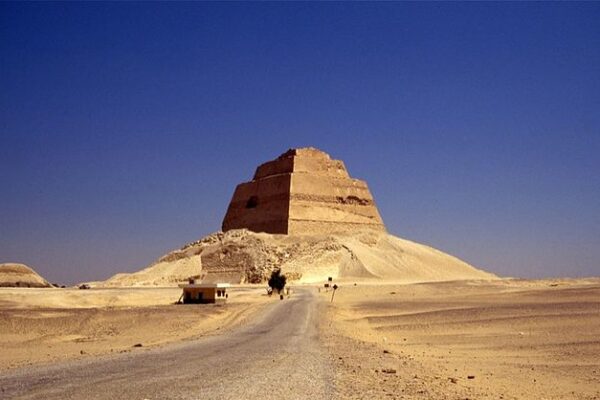The 4,600-year-old painting, referred to as “Maidum Geese,” was discovered in the 1800s within the tomb of Nefermaat, a vizier, or the highest-ranking official who served the pharaoh (and was likely also his son) and his wife Itet in Meidum, an archaeological site in Lower Egypt, consistent with the Metropolitan Museum of Art in NY City. The painting was discovered within the Chapel of Itet inside the tomb.

The vivid painting, which was once a part of a bigger tableau that also depicted men trapping birds during a net as offerings for the tomb owner, has since been described as “Egypt’s Mona Lisa,” study author Anthony Romilio, a technical assistant at The University of Queensland’s school of chemistry and molecular bio-sciences in Australia, said during a statement. But “apparently nobody realized it depicted an unknown species.”
The pyramid at Meidum is so unusual that it has attracted the attention of “ancient high technology” researchers. I don’t always buy their arguments, especially when they drift into the whole area of ancient aliens and mythical lost civilizations, but they raise some interesting questions, and their work is definitely entertaining.
It has often been assumed that the original builder of this Step Pyramid was Huni, the last king of the 3rd Dynasty. This is, however, merely based on the desire to credit at least one major building to this otherwise elusive king. Huni’s name has not been found in or near the Meidum Pyramid, making it quite unlikely that this monument was built for him.
The fact that the pyramid was named ‘Snefru Endures‘ has led others to suggest that it was Snofru who built this monument. The fact that none of the Mastabas surrounding the pyramid are older than the early 4th Dynasty and that several sons of Snefru were buried there also confirms that the pyramid must be dated to the beginning of the 4th rather than the end of the 3rd Dynasty.
Recent archaeological research has led to the assumption that Snefru built this pyramid before his 15th year, and then abandoned the site to start a new royal cemetery at Dahshur, some 40 kilometers to the North. What is certain is that Snefru at one point during his reign -and some suggest a high date such as the 28th or 29th year of his reign- ordered the transformation of the original Step Pyramid into a true pyramid. It is unlikely that Snefru usurped this pyramid, since he had already built two other pyramids at Dahshur. The reason why this king would have wanted 3 pyramids, making him the most productive pyramid builder in the history of Egypt, is not known. It is also not known whether the conversion of the original Step Pyramid into a true Pyramid was completed.

Today there is little to suggest that this monument once indeed was a pyramid. All that remains now is a three-stepped tower rising up from a hill of debris. It has long been assumed that, while the pyramid was being converted from a Step Pyramid into a true Pyramid, the weight of the added outer casing was pressing down so hard that the entire structure collapsed. However, recent archaeological research has found no trace of tools or equipment that would have been left behind by the workers, had they actually witnessed the pyramid’s collapse. If this pyramid collapsed, it must have been at a much later date than was assumed. It is also very likely that this monument, like so many others, fell victim to local peasants quarrying for stone.






